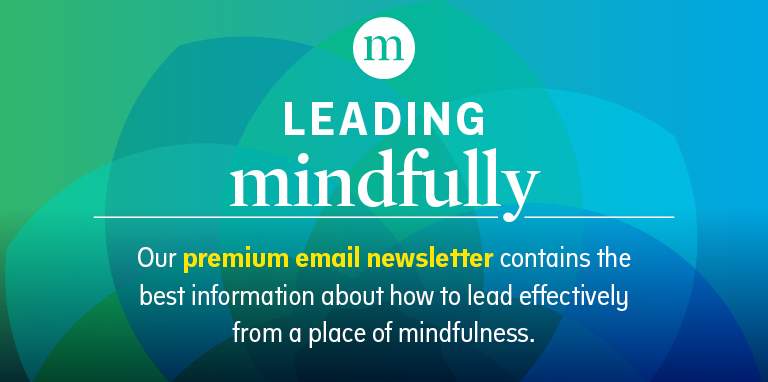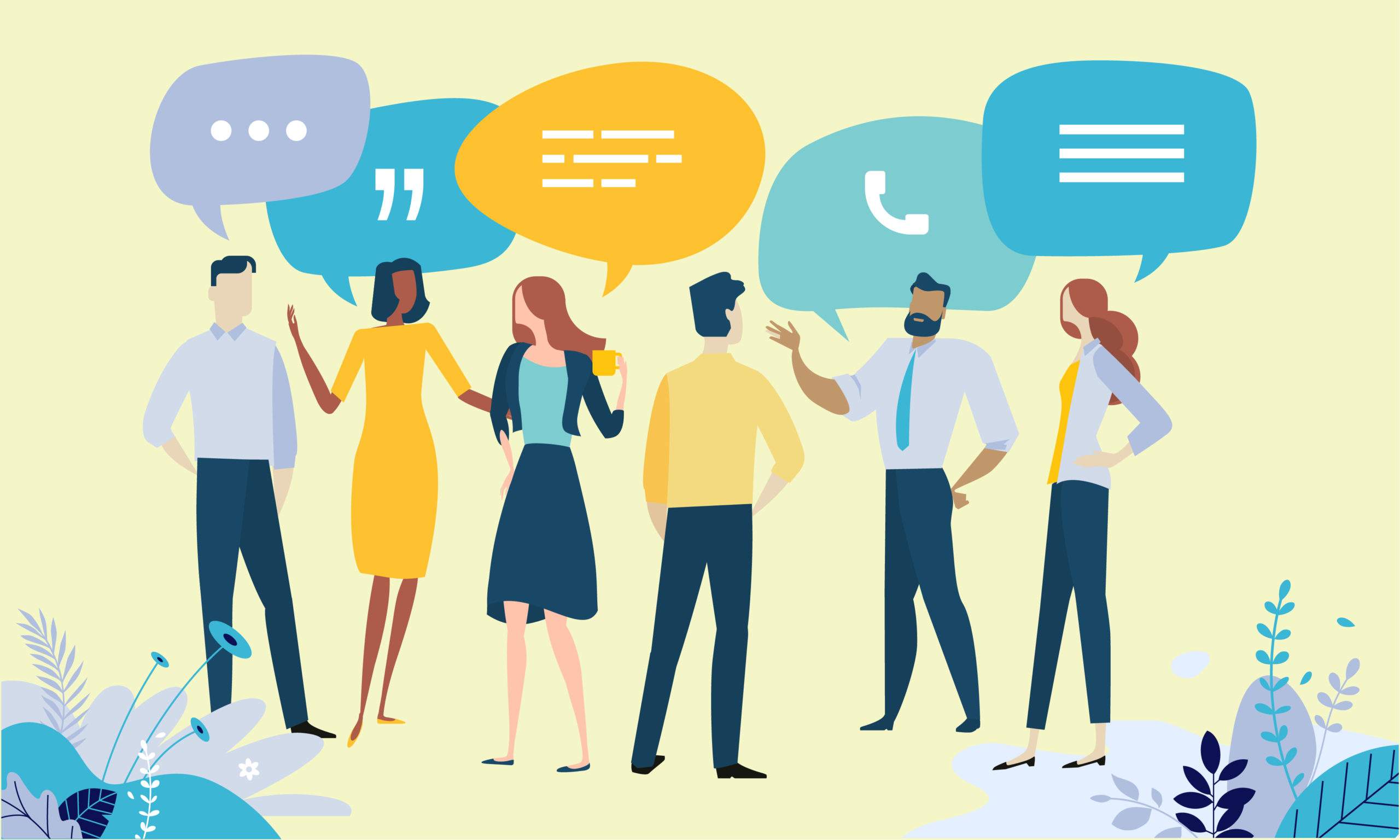
Our virtual meeting started with a “minute-to-arrive” practice. Jason Luk, a Verizon Media employee who holds the titles of advertising-sales account manager and global mindfulness lead, began:
Place your feet on the floor and lengthen your spine. Close your eyes, take a deep breath, and begin to notice any sensations in the body. Look at internal weather patterns, noticing how do I feel right now. Set an intention…who will I choose to show up as during this meeting?
Not the typical start to an interview, but a welcome and calming one. This sort of mindfulness practice is becoming common in the workplace culture of a growing number of companies that are implementing systematic mindfulness programs in the form of mindful moments, speaker series, meditation app access, dedicated quiet rooms, and a wide variety of formalized mindfulness training. Why are these global enterprises spending employee time and financial resources on these programs? Turns out, for reasons including increased productivity, employee wellbeing, and a 200% return on investment.
Key Summary
What is Mindful Working? The integration of mindfulness practices into workplace activities to enhance focus, wellbeing, and effectiveness.
Key Benefits in the Workplace:
- Improved focus and attention management
- Better stress regulation and resilience
- Enhanced communication and listening skills
- Increased creativity and problem-solving capacity
- Greater work satisfaction and reduced burnout
Best Practices:
- Brief mindfulness breaks throughout workday
- Mindful transitions between tasks
- Single-tasking instead of multitasking
- Meeting and email mindfulness
- Mindful listening during interactions
Implementation Approach: Start with simple practices that fit into existing routines rather than adding more to busy schedules.
Are You a Mindful Leader?
A mindful leader embodies leadership presence by cultivating focus, clarity, creativity, and compassion in the services of others. Learn more about cultivating a mindful leadership attitude, and why it will benefit you, your colleagues and your organization.
Read More

Why Bring Mindfulness to Work?
Employees are more stressed than ever. According to a survey conducted by LinkedIn, nearly half of workers today feel stress in their jobs, with 70% of them feeling it from their workload and work-life balance. Gallup reports that 23% of employees feel burnout at work very often or always, while an additional 44% reports feeling it sometimes.
“There is a zeitgeist in the business community,” said Rich Fernandez, CEO of the Search Inside Yourself Leadership Institute (SIYLI) and co-founder of Wisdom Labs. “Mindfulness programs are linked to employee well-being, because it serves to support conditions for thriving and flourishing in contemporary work cultures.” The Business Roundtable, a lobbying group of nearly 200 chief executives, recently changed its charter after 20 years, shifting the standard of “corporate responsibility” to benefit all stakeholders—which includes employees, customers, suppliers and communities—rather than only financial shareholders.
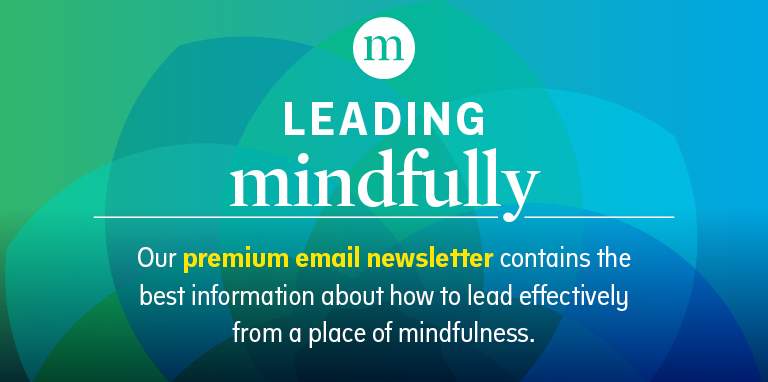
Four Ways Mindfulness Transforms How We Work
By training us to pay attention moment-by-moment to where we are and what we’re doing, mindfulness can help us choose how we will behave, nudging (or jolting) us out of autopilot mode. Here are four ways mindfulness transforms how we work.
- Allows you to keep an open, curious mind
- Teaches you the skill of responding, rather than reacting
- Helps you remember that your thoughts are not facts
- Builds healthy habits that cultivate creative potential.
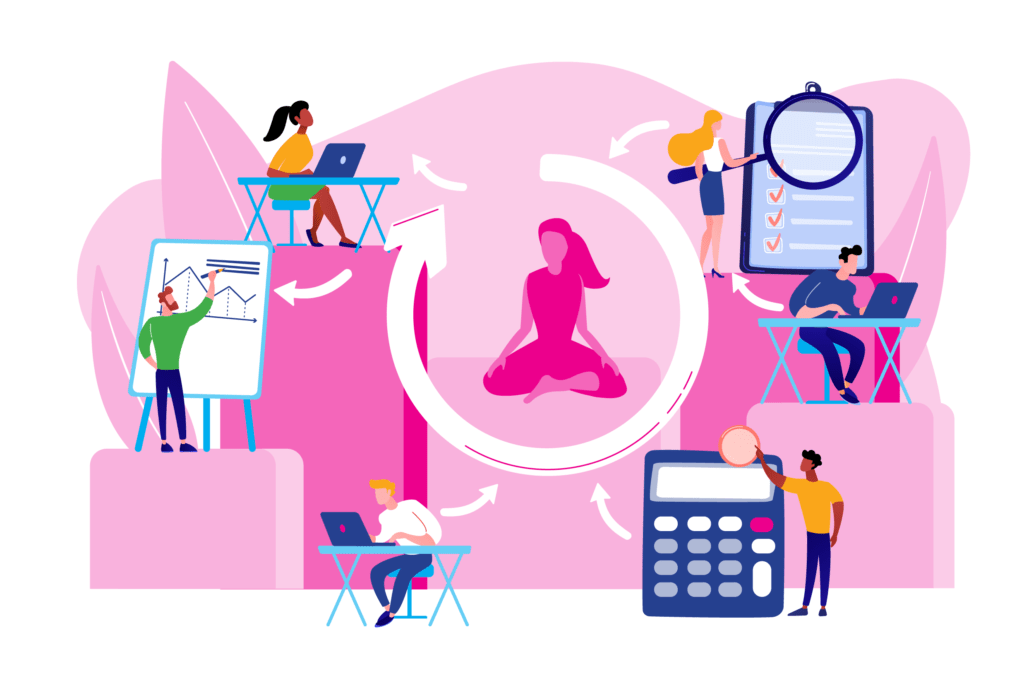
How Do You Know Mindfulness Works at Work?
Among those leading the charge to create a mindful workplace culture is the Mindful Workplace Alliance (MWA), a group of nearly 25 leaders from companies such as LinkedIn, Google, Intel, Verizon Media, Genentech and SAP. “Every company in the MWA is at a different stage in its evolution, from more established programs to, in some cases, it’s one person trying to light the fire internally,” says MWA founder Scott Shute. The success of mindfulness programs in the workplace looks different for everyone. Here are just a few ways organizations are tracking success:
SAP saw a 200% return on investment: Based on survey data taken from 650 SAP employees, pre- and post-SIYLI training (post-surveys were taken at 4 weeks and 6 months after programming), the results showed improved well-being, satisfaction, focus, creativity and lower levels of overwhelm and stress during the workday. According to Peter Bostelmann, Chief Mindfulness Officer at SAP, the company has seen a 200 percent return on investment, with the SIYLI and mindfulness training leading to a rise in employee engagement and leadership trust, and a fall in absenteeism.
Intel saw an increase in employee well-being: At Intel, employees who go through the mindfulness program are asked to complete the Mindfulness Attention Awareness Scale (MAAS), which measures attention to and awareness of events and experience, as well as self-rank—before and after the 10-week session—in a number of areas, such as feelings of stress, engagement in meetings, ability to focus, and quality of relationships at work. “On average, we see a positive shift of two points on each vector from every session ever taught here,” says Lindsay Benjamin, Intel’s Visual Computing Software Evangelist and Corporate Mindfulness Lead. “In seven years, with surveys of thousands of people, we have never seen a regression on the scale or reported a lower score on the post survey.”
LinkedIn saw an increase in skilled applicants: Mindfulness programs are becoming a “talent magnet,” says Shute, who notes that he’s approached regularly by people wanting to work at LinkedIn because of these programs, and by employees expressing gratitude that that the company offers these well-being practices and invests in things that will make them successful. Walking down the hallway one day, Shute ran into a young employee who shared that she used to think mindfulness was a “bunch of B.S.” but she’d now been practicing it for over a year and recently presented at an all-hands meeting of 80 people. “There’s no way I would’ve been able to do that a year ago,” she told Shute. “I got nervous, practiced breathing, went up there and crushed it.” Shute spoke to her team leaders after hearing this and learned how much this employee had changed, growing more capable and confident. “This is why we’re doing what we’re doing,” Shute adds.
Verizon saw an impact on clients: Some mindful leaders are also bringing the culture of workplace mindfulness to external clients with profound impact. At the start of a weekly client meeting, account manager Jason Luk was informed that it would be cut from 30 minutes to 15 because the client explained they were “super slammed.” When Luk offered to skip the mindful moment practice with which he typically launched each week’s gathering, the client responded, “Absolutely not! We’ll do that first and then go through the hot topics.”
Five Common Work Challenges Mindfulness Can Improve
When things get tough at work, that’s when your mindfulness practice really shines. Here’s how taking the time to ask yourself what’s actually happening can make or break your work day.
- Defuse emotional flare-ups in a meeting
- Promote deep focus when distraction takes over
- Focus on solutions to problems rather than blame
- Empower yourself to empower others rather than fix everything yourself
- Interrupt a tendency for hasty outbursts
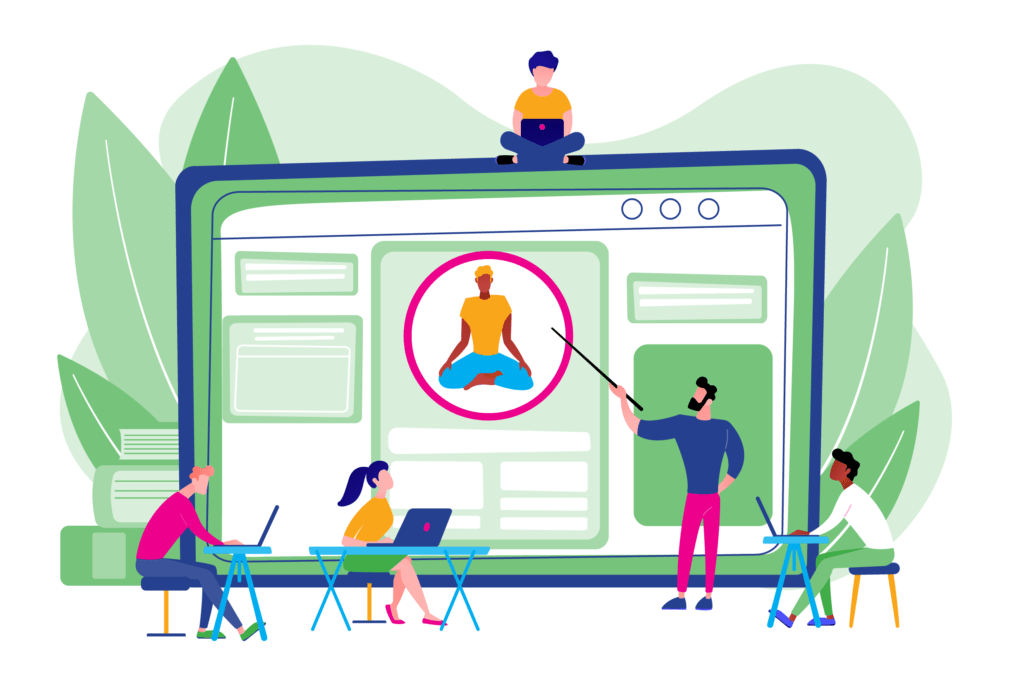
How Three Top Companies Started their Mindfulness Programs
As mindfulness practices make their way into cubicles and C-suites, companies must determine their own methods for effective development and implementation. Here are the strategies three top companies used to launch effective programs.
How Mindfulness started at Intel: Lindsay Benjamin, Intel’s Visual Computing Software Evangelist and Corporate Mindfulness Lead, spearheaded its flagship mindfulness offering, Awake@Intel, seven years ago. She created an 8-week, in-person pilot program, and gathered pre- and post-surveys showing the impact, which garnered the support of Intel’s human resources department.
Benjamin’s pillar offering is now a 10-week mindfulness program that takes place every Friday morning for 90 minutes with a weekly topic, several meditations, timed writing, and group activity. “Employees are so busy and if that meeting is not on your calendar, whatever the fire drill of the day is will take over,” says Benjamin. “You have to get them in the room to feel the stillness to create the neurological changes.” Since its inception, over 7,000 employees have taken the in-person course, while also receiving access to mindfulness lessons through an app, mindfulness at on-site gyms, and dedicated rooms for meditation.
How Mindfulness Started at SAP: Peter Bostelmann, hired at SAP as an industrial engineer, found mindfulness 10 years ago in his personal life, while professionally running large scale projects at the company. Realizing the benefits of his practice—”greater focus, more calm and experiencing joy even in the midst of challenges”—Bostelmann felt intrigued by the idea of bringing mindfulness training to his workplace and attempted to get funding to start a pilot program. “There was curiosity but also skepticism,” he says. “People responded with, ‘I would be interested, but I’m not sure if the company is ready.’”
Following his intuition, Bostelmann arranged to bring in a speaker, Chade-Meng Tan, a co-founder of SIYLI and Google’s original mindfulness guru. When a few hundred people showed up, packing the cafeteria, Bostelmann had his evidence of employee interest, and in a grassroots effort, enlisted 50 of the attendees to convince their managers that mindfulness training was worth supporting.
In 2013, with SAP’s blessing and backing, Bostelmann brought in SIYLI for a pilot training program, knowing its method was based in neuroscience and safe in a business context. As of September 2019, more than 10,000 SAP employees have completed the two-day mindfulness training and more than 8,000 employees are on the waiting list. In an effort to train trainers within the company, there are currently 42 SAP internal SIYLI trainers worldwide, and over 50 mindfulness ambassadors who organize local mindfulness practices at more than 30 SAP locations .
How Mindfulness Started at Verizon Media: At Verizon, mindfulness programs are still in their early stages and showing great promise. Jason Luk was approached in 2018 about mindfulness training by the company’s Chief People Officer and Luk jumped at the chance. “My instinct was to give an experiential activity, a taste of mindfulness,” said Luk. “So I led him through a mindfulness meditation and after that he was on board, telling me to let him know what I need.”
Since last year, Luk, who’s full-time role is still in ad sales, has put together a mindfulness team of five employees—with three more joining soon. So far, programming has included curating speakers, such as meditation teacher Sharon Salzberg, facilitating intro sessions, and offering a five-week program delivered by a company called Potential Project. A Verizon-Media intranet page acts as a hub to publicize mindfulness happenings and empower ambassadors who sign up to host meditations at different office locations. A partnership with the app Insight Timer was announced last July, and already more than 600 employees have registered. “We are creating an ecosystem where the intention is to be able to provide something for every level of interest of employees, and based on the response, it seems we are hitting the mark,” said Luk.
Four Mindfulness Practices from Top Companies
A Minute to Arrive from SAP
This short audio introduction offers insight into a simple practice to bring you focus and presence as you prepare to arrive for a meeting or any task.
Minute to Arrive Mindfulness Practice—SAP
The Three Breaths Practice from LinkedIn
This two-minute, relaxing breath practice is a short meditation that will help you let go, be here, and open up.
A Walking Meditation from Verizon
A 15-minute open eyed practice anchoring attention into the feet and walking back and forth from one point to another—either indoors or out. No where specifically to go or be and simply noticing the sensations with each step.
A 15-Minute Walking Meditation—Jason Luk
A Focus Meditation from Infineon
In this recording, a discussion on mindfulness and the focus cycle experienced during meditation, followed by a calming five-minute body scan.
A Meditation for Focus and Calm—Kai Towers
more practices
A Meditation to Focus Attention
When you’re stressed, overwhelmed, or distracted, you can regain momentum by resting attention on a single focal point. Explore this 9-minute mindfulness practice to calm a busy mind from Rich Fernandez, CEO of the Search Inside Yourself Leadership Institute.
Read More
Meditate at Your Desk
Before you get to the point where you feel like resting your head on your desk, recharge by adding some mindfulness to your work day with this simple guided practice to meditate right where you are.
Read More
Do This in the Morning for a Better Workday
Starting the day off more in touch with your goals can create a better work experience. Explore these three mindful prompts to achieve greater focus.
Read More
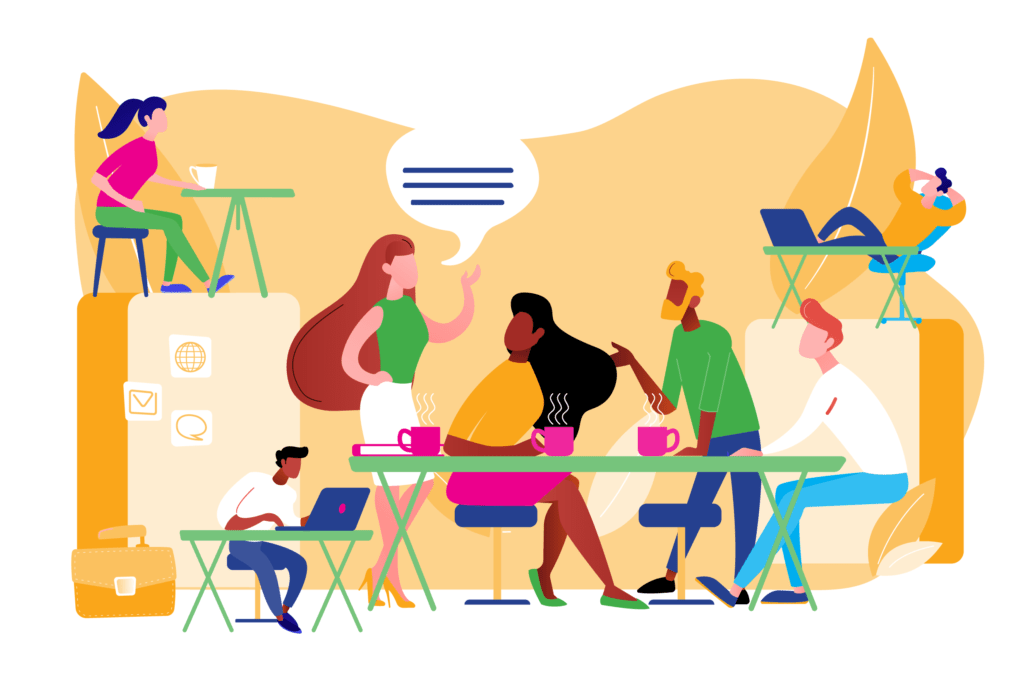
How You Can Bring Mindfulness to Your Workplace
1) Lead by Example
Jeff Weiner, the CEO of LinkedIn, has spoken publicly about mindfulness, meditation and using apps, which helps create “an umbrella of acceptance,” Shute says. Seeing execs sitting and breathing alongside lower level employees is an important recognition that these practices are beneficial for everyone.
“Leadership is then saying that it’s okay to take care of yourself at work.”
“When company leaders participate, showing up for programs and practicing in community mindfulness sessions, they give permission to practice and accept that these skills work,” says Parneet Pal, the Chief Science Officer at Wisdom Labs, which provides LinkedIn with mindfulness programming. “Leadership is then saying that it’s okay to take care of yourself at work.”
2) Build Community
Mindful leaders encourage building community around these practices and start integrating them into everyday work life, along with programs that include an ambassador or community leader. “Go where the energy is and find the people who are excited and let them lead,” says Shute.
When companies build an in-house teacher base, it creates an internal multiplier, according to Bostelmann. “Our trainers are like 42 lighthouses that are really passionate and love doing it,” he adds. “After five years they are still eager to do the trainings.”
Infineon launched its InMind mindfulness program in September 2018 and currently offers employees information sessions, peer-led mindfulness sessions, a website that provides information and resources, and a distribution list used to communicate with other practitioners and grow the community.
3) Accessibility is Key
Employees may be along the spectrum of behavior change, notes Pal. “We designed products to offer a 360-degree accessibility point for people to dip their toes in to try, to get information and then actually experience practices themselves.”
With more than 14,000 employees, LinkedIn uses a smartphone app to spread mindfulness practices. “Try to offer something for everyone in their mindfulness journey,” suggests Shute. Once a year, the company proposes a 30-day challenge, offering employees a chance to enter a raffle for prizes if they meditate 20 times in 30 days. Then, armed with a list of registrants—obviously interested in mindfulness—the company offers weekly community meetings, where practitioners watch a brief video with a guided practice, build some skills and in turn, a growing community.
4) Define Language and Structure
Tech companies tend to approach mindfulness in a science-based, secular way. “It’s crucial to understand the audience, know their values and speak in language that resonates with them,” says Kai Stowers, Organization Transformation and Change Specialist at Infineon. “I cannot emphasize enough the importance of actively seeking feedback and using it to improve your mindfulness program.”
“It’s important to have a clear structure about what it is and what it isn’t,” says Bostelmann. “We teach only what is backed by neuroscience and evidence of positive psychology, and are careful about language. We want people who are well trained in mindfulness, and practices that involves kindness and compassion.”
5) Bring Mindfulness into Company Culture
“More and more we do a ‘mindful minute to arrive’ in meetings, giving people a chance to pause and settle in,” says Bostelmann. “With these micro practices, people meditate within a business environment and see that you don’t need to escape or go to a mountain top—you can do it sitting in your office chair.”
Other suggestions for bringing mindfulness into the workplace culture include device-free meetings and a dedicated quiet room for meditation and reflection.
6) Share Resources
Creating an intranet page will keep employees up to date on any mindfulness programming and related events. Post articles, videos, and podcasts to raise awareness. “Although the subject of mindfulness goes back thousands of years, the resources that have proven to be the most accessible to the audience are the scientific literature and authors who base their work on research,” says Stowers. His favorites include Chade Meng-Tan, Daniel Goleman, Dan Harris and Kristin Neff.
7) Communicate with Leadership
Mindfulness programs can be formulated from either the top down (LinkedIn) or the bottom up (SAP), but according to Fernandez, it’s most effective when there’s an internal champion and senior sponsorship. “If people are organizing meditation groups, it creates fertile ground for a senior leader to formally bring in some teachers, or allocate a space, or make it a part of the wellness agenda,” he says. “When employees do this organically, they can get the attention of executives which can be helpful, or a legendary leader can say, ‘Here’s why it’s aligned with our culture and here are solutions to provide,’ and invite people to join.” Both are useful to cultivate for bringing mindfulness practices into an organization.
Is Mindfulness just Mind Control?
There’s been some criticism that mindfulness acts as a band-aid, or a way to dull the impact of a toxic workplace and the demands of modern work life. “There’s some fairness to this,” says Rich Fernandez, “but the key thing is that mindfulness in the workplace as it supports thriving and flourishing is not a band-aid—it’s not to erase ills as much as to give people better ways to navigate them.”
According to Parneet Pal, the criticism suggests that companies are aiming to extract productivity and value from their employees. But, she argues, this is a short-sighted view. “Mindfulness is not just about focus and attention,” explains Pal. “We rely on the wisdom that mindfulness and compassion practices enable an ability to step back and evaluate where you are for yourself and those around you.”
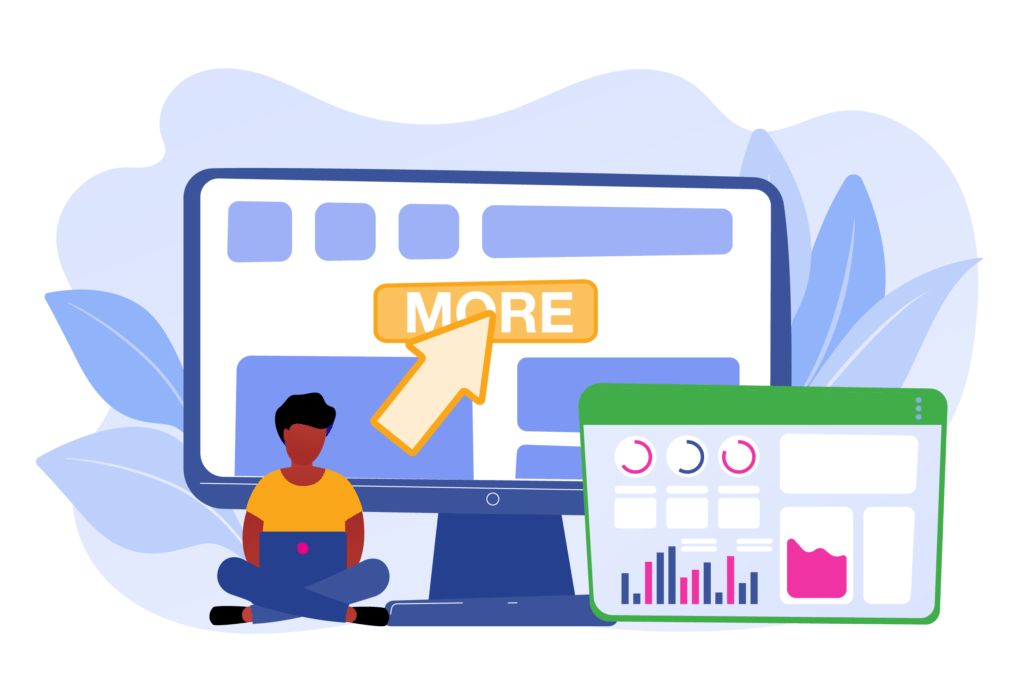
The Future of Mindfulness at Work
The prediction from mindful leaders leans toward mindfulness becoming as mainstream as having a gym or nutritious food options at work. “Fifty years ago, physical exercise was a strange thing,” says Scott Shute. “Now, every company feels good if they can provide gyms at work.”
“I foresee mindfulness as a mental exercise that will go through the same transition as physical exercise,” says Parneet Pal. “In five or ten years, employees will say they’re going to check out the 5:30 pm meditation class.”
A self-proclaimed “realistic optimist,” Peter Bostelmann sees mindfulness getting deeper and wider, more part of the culture, and more destigmatized. “As others have said before,” he adds, “mindfulness is the next healthcare revolution.”
read more
Want to Really Help Others at Work? Talk About Your Failures
By being real with someone, it’s possible to create space for a different type of connection. Ryan Vaughn offers insight on why it’s important to foster authentic relationships in the workplace.
Read More
Transforming Leaders into Mindful Leaders
We can no longer afford to make decisions with distracted minds, reacting instead of responding—Here’s how to train your mind to lead with focus and clarity.
Read More
The Six Rules of Conscious Emailing
Emails can be a minefield for miscommunication. By slowing down before you press send, you can email more thoughtfully.
Read More
How Mindfulness Improves Strategic Thinking
Three ways mindfulness can help leaders—and their organizations—identify important ideas.
Read More
What Makes a Conversation Mindful?
So much of what we accomplish, particularly at work, comes in the form of conversations. And when those conversations can be more mindful, we can develop a kinder, more compassionate culture.
Read More




